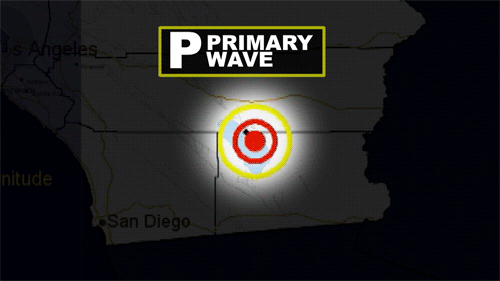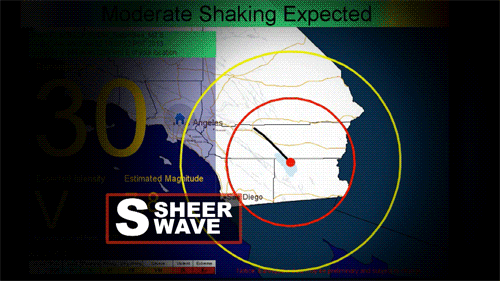There is nothing in nature like a seismic event, and no one knows that more than Dr. Tom Heaton. He’s been studying quakes since the 1970s at America’s pre-eminent seismic center, Caltech.
"One of the things you don’t like about earthquakes is when it starts you really have no idea of how big the shakings going to get," Heaton says. "If you’re in the wrong place it can be terrifying. If you know you’re in a place that’s hazardous, you really don’t know what’s going to happen next."
But what if we could essentially slow down the inevitable, even just for a few seconds—long enough to get a warning out?


This is California’s earthquake warning system, Caltech’s Earthquake Early Warning System, or EEW.
EEW first senses the quake’s P waves, or primary waves, seen here as a yellow circle. P waves tell scientists a quake is coming, but don’t cause any shaking.
Then the S waves, or sheer waves — the red circle — follow about 30 seconds later. These are the waves that cause damage.
That’s how this system successfully predicted the most recent quakes to hit Los Angeles. Ironically, the public never got an early warning, because California’s system is only a prototype, leaving most people frightened and surprised.
A lot can happen in that time between the P waves and S waves.
"It is very much like watching the way a hurricane plays out, but everything plays out really quickly,” Heaton says. "In a hurricane this would happen in a couple of days. In an earthquake this is a couple of minutes.”
That means decisions about what to shut down have to be made in an instant. Timing is everything, but even a few second’s warning can help save lives. Trains could be stopped, planes waved off from landing on potentially ruined runways, elevators sent safely to the nearest floor.
Hospitals can go into emergency mode.
“There’s a good chance someone is going to be right in the middle of a very delicate procedure when an earthquake occurs,” says Kurt Kainsinger, who manages earthquake safety at one LA’s busiest medical centers, UCLA’s Ronald Reagan Hospital. “If we have advanced warning, if we have five seconds, 10 seconds, 30 seconds warning—there’s a lot we can do.”
Heaton says, "When I was a kid the weather guys weren’t so good. Over time, they’ve gotten better sensors, better ways to communicate. For us in the earthquake business, it’s very similar to the weather—but everything happens much faster.”
Watch “TechKnow” Saturdays at 7:30 p.m. ET/4:30 p.m. PT.
Error
Sorry, your comment was not saved due to a technical problem. Please try again later or using a different browser.